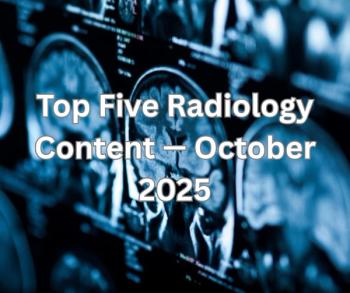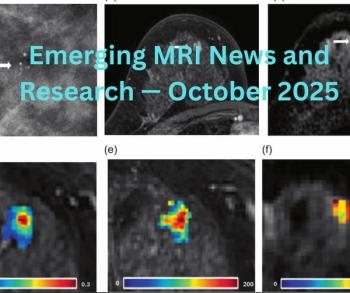
- Diagnostic Imaging Vol 32 No 5
- Volume 32
- Issue 5
Electronic brain atlases emerge as clinical and educational tool
The topic of electronic brain atlases was first discussed in Diagnostic Imaging Asia Pacific almost a decade ago (see “Electronic brain atlases show value in brain studies,” June 2001, page 35). The article featured four atlases and addressed the potential of this innovation.
The topic of electronic brain atlases was first discussed in Diagnostic Imaging Asia Pacific almost a decade ago (see “Electronic brain atlases show value in brain studies,” June 2001, page 35). The article featured four atlases and addressed the potential of this innovation.
Our efforts in this area have expanded tremendously since then in terms of concepts, applications, and technology. A total of 22 separate atlases are now available and more than 4500 CDs have been distributed to medical schools and individual clinicians. The electronic atlases have attracted numerous awards from radiological societies, generated dozens of patent applications, and led to the publication of a few hundred papers and abstracts. The atlases are also accepted by the image-guided surgery community and have been installed at over 1500 neurosurgical workstations.
One of the latest atlases to be published is The Cerefy Atlas of Cerebral Vasculature. This is intended to be used in a wide range of areas, including neuroradiology, neuroanatomy, neuroscience, neurosurgery, neurology, and neuroeducation.1 The atlas is derived from 3T MRI data and correlates the cerebrovasculature with surface and sectional neuroanatomy.2 Users can test their knowledge with self-assessment options and build any vascular network from intelligent navigation and dynamic scene compositing tools.3 Two public domain versions are also available: a lite atlas and an educational atlas covering brain structure and vasculature. A commercial version of an atlas of cerebral arterial variants presented at the annual meeting of the American Society of Neuroradiology, held in New Orleans in June 2008 is also under development.4
The Cerefy Atlas of Cerebral Vasculature is the first of a new generation of electronic atlases. It is fully 3D, extendible, electronically dissectible, stereotactic, metalabeled, and contains exportable contents that can be employed in other applications. This generation of atlases is based on a pyramidal concept; the atlas content is built from blocks and can be extended while preserving its concept and main features.
Our newest project, The Brain Atlas of Structure, Vasculature and Connections, was presented at the annual meeting of the RSNA in November 2009. It has been created manually from multiple 3T and 7T MRI data sets using dedicated editing tools. This atlas contains cortical areas, subcortical structures, arteries, veins, dural sinuses, and white matter tracts, all subdivided and fully labeled with their names and diameter measurements. The atlas comprises over 1100 pieces, with the smallest vessels measuring just 90 microns in diameter.
This new high-resolution 3D atlas is comprehensive, spatially consistent, volumetric, stereotactic, explorable, dissectible, and interactive. All 3D models of the brain's structure, vasculature, and white matter tracts have been derived in vivo from the same specimen. Specific radiological, surgical, and educational conventions for presentation are available in a single system. This solution allows the cerebral components, such as structures, white matter tracts, and vessels, to be presented individually or in their surrounding context. In addition, when developing the application, we focused not only on scientific problems but also on artistic aspects, including the user interface and brain coloring.
The 3D brain is dissectible electronically into gross components (hemispheres, cerebrum, cerebellum, brain stem, spine, groups of vessels, and tracts), selectable individual components (structures, vessels, tracts), and layers (cortex, white matter, subcortical structures). It can, additionally, be exposed using multiple 3D cutting planes in one arbitrary and six predefined directions. The cerebral models are placed in a stereotactic system that enables measurements to be made and coordinates to be acquired. The brain can be explored, built and deconstructed, and labeled and quantified rapidly with just a few mouse clicks.
This new atlas serves as a foundation for several educational, research, and clinical applications. The main clinical application is stroke.5 Another clinical application is the atlas-assisted interpretation of 320-slice CT examinations. A 320-slice CT scanner can produce approximately 6000 to 7000 images per minute; reading this amount of data presents a significant challenge. The combination of our atlas with 3D visualization techniques could potentially assist in the interpretation process. We are in the process of integrating our atlas with a radiological workstation with this application in mind.
Two additional products under development are the meditation atlas and the atlas of neurological disorders. The former is derived from fMRI studies of senior meditators. The latter shows 3D lesions embedded into the brain atlas of structure, vasculature, and connections, and it correlates them with the resulting disorders and symptoms. For instance, a lesion in the subthalamic nucleus causes hemiballismus, which is characterized by uncontrollable and violent movements of the contralateral extremities.
We are now putting more emphasis on the educational relevance of these products at different levels, for instance, undergraduate, graduate, residents/fellows, and CME (continuing medical education) accreditation. The atlas is being licensed on a trial basis to centers in North and South America, Europe, and Singapore. Meanwhile, more cerebral structures are being added: our aim is for the atlas to include 2010 pieces by the end of this year.
More information about the availability of these products can be found at the website for Cerefy Atlas-based solutions (
Articles in this issue
over 15 years ago
Health reform is one thing, but legislators are not physiciansover 15 years ago
Breast surgeons to tackle screening mammographyover 15 years ago
Tips for relieving workstation strainover 15 years ago
Nothing wrong with techs seeking a 'time out'over 15 years ago
Multidetector CT reveals diverse variety of abdominal herniasover 15 years ago
Watch out if depression doesn't show up on x-rayover 15 years ago
How to get the gain without the pain in shift to 3T MRover 15 years ago
Shearwave elastography improves breast lesion Dxover 15 years ago
Breast-specific gamma scans monitor chemoover 15 years ago
Cardiac imaging system reduces scan timeNewsletter
Stay at the forefront of radiology with the Diagnostic Imaging newsletter, delivering the latest news, clinical insights, and imaging advancements for today’s radiologists.




























